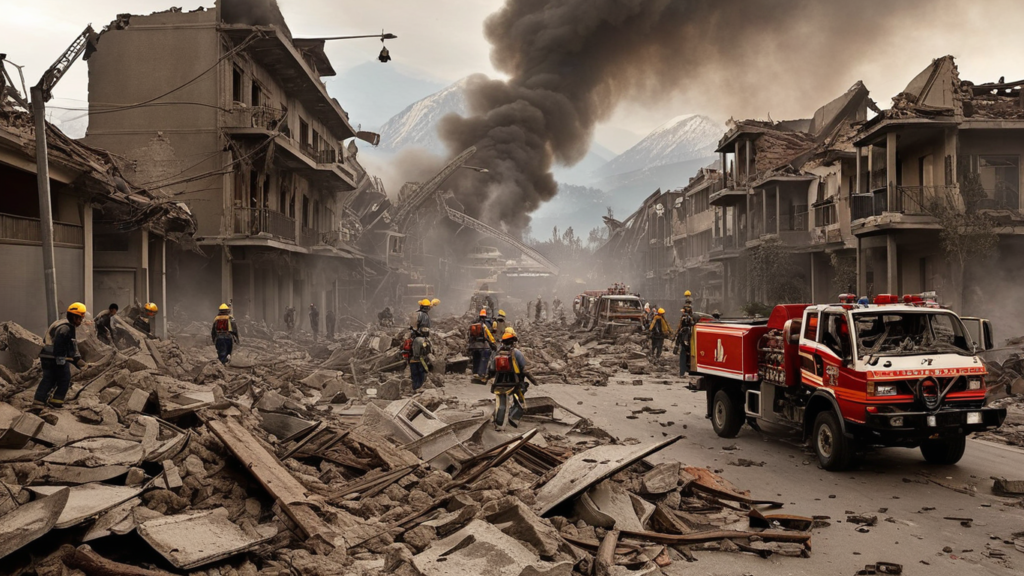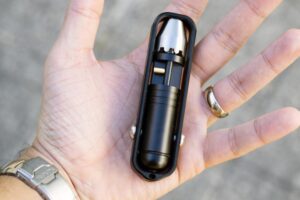Get Your Earthquake Emergency Kit Today! Buy it Now!!

What You Should Do for Earthquake Survival
Introduction to Earthquake Survival
Earthquakes are unpredictable natural disasters that can strike with devastating force, causing widespread destruction and loss of life. Surviving an earthquake requires preparation, quick thinking, and knowledge of safety procedures.
Understanding Earthquakes
Definition and Causes
Earthquakes occur when there is a sudden release of energy in the Earth’s crust, resulting in seismic waves. They can be triggered by volcanic activity, tectonic plate movements, or human-induced activities such as mining or reservoir-induced seismicity.
Risk Assessment
Understanding the level of earthquake risk in your area is crucial for preparedness. Regions near fault lines or plate boundaries are at higher risk, while those further away may still experience earthquakes, albeit less frequently.
Preparation Before an Earthquake
Emergency Kits
Having a well-stocked emergency kit can significantly increase your chances of survival during and after an earthquake. Essentials include non-perishable food, water, first aid supplies, flashlights, batteries, and important documents.
Home Safety Measures
Securing heavy furniture, anchoring tall structures, and retrofitting older buildings can help minimize damage to your home during an earthquake. Identifying safe spots within your house, such as sturdy doorframes or under heavy furniture, is also crucial.
Actions During an Earthquake
Drop, Cover, and Hold On
When an earthquake strikes, drop to the ground, take cover under a sturdy piece of furniture, and hold on until the shaking stops. Avoid doorways, windows, and elevators, and protect your head and neck from falling debris.
Finding Safe Shelter
If you’re outdoors during an earthquake, move to an open area away from buildings, trees, and power lines. If you’re in a vehicle, pull over to a safe location and stay inside until the shaking stops.
Post-Earthquake Safety Measures
Checking for Injuries
After the earthquake, check yourself and others for injuries. Administer first aid if necessary and seek medical attention for serious injuries. Be mindful of potential hazards such as gas leaks, downed power lines, and damaged structures.
Evacuation Plans
If your home is no longer safe to occupy, follow evacuation orders issued by local authorities. Have a designated meeting place for your family and a communication plan in case you get separated.
Long-Term Recovery and Rebuilding
Community Support
Recovering from a major earthquake requires the support of the entire community. Participate in relief efforts, offer assistance to those in need, and stay informed about recovery efforts in your area.
Psychological Well-being
Earthquakes can have a lasting impact on mental health, causing anxiety, trauma, and post-traumatic stress disorder. Seek support from friends, family, or mental health professionals if you’re struggling to cope with the aftermath of an earthquake.
Conclusion
Surviving an earthquake requires proactive preparation, quick thinking, and decisive action. By understanding the risks, preparing emergency supplies, and knowing what to do during and after an earthquake, you can increase your chances of survival and minimize the impact of this natural disaster.
FAQs (Frequently Asked Questions)
- How can I prepare my home for an earthquake?
- Secure heavy furniture, anchor tall structures, and create an emergency kit with essential supplies.
- What should I do if I’m indoors during an earthquake?
- Drop to the ground, take cover under a sturdy piece of furniture, and hold on until the shaking stops.
- Is it safe to use elevators during an earthquake?
- No, it’s best to avoid elevators and use stairs instead during an earthquake.
- What should I include in my emergency kit?
- Non-perishable food, water, first aid supplies, flashlights, batteries, and important documents are essential items for an emergency kit.
- How can I support earthquake relief efforts in my community?
- You can volunteer with local organizations, donate to reputable charities, or offer assistance to those in need.
Natural disasters like earthquakes can strike suddenly and without warning, leaving devastation in their wake. However, with proper preparation and knowledge of safety procedures, individuals and communities can mitigate the impact and increase their chances of survival.
The Importance of Preparedness
Preparation is key when it comes to surviving an earthquake. By taking proactive steps to secure your home, assemble emergency supplies, and create a family communication plan, you can minimize the risks associated with this natural disaster.
Securing Your Home
Before an earthquake occurs, it’s essential to assess your home for potential hazards and take steps to mitigate them. This may include securing heavy furniture to the wall, reinforcing structural weaknesses, and retrofitting older buildings to meet current safety standards.
Assembling Emergency Supplies
An emergency kit should contain essential items that can sustain you and your family for at least 72 hours. This includes non-perishable food, water, first aid supplies, medications, blankets, and personal hygiene items. It’s also important to include items specific to your family’s needs, such as baby supplies or pet food.
Creating a Family Communication Plan
In the event of an earthquake, communication networks may be disrupted, making it difficult to reach loved ones. Establishing a family communication plan ensures that everyone knows how to get in touch and where to meet in case of separation. Designate an out-of-area contact person who can serve as a central point of communication for the family.
Safety Procedures During an Earthquake
When an earthquake strikes, quick thinking and decisive action can mean the difference between life and death. Follow these safety procedures to protect yourself and your loved ones:
Drop, Cover, and Hold On
The “Drop, Cover, and Hold On” technique is widely recognized as the best way to protect yourself during an earthquake. Drop to the ground, take cover under a sturdy piece of furniture or against an interior wall, and hold on until the shaking stops. This helps protect you from falling debris and reduces the risk of injury.
Stay Indoors
If you’re indoors when an earthquake occurs, stay inside and take cover until the shaking stops. Avoid doorways, windows, and exterior walls, as they are more prone to collapse. If you’re in bed, stay there and cover your head with a pillow to protect yourself from falling objects.
Evacuate if Necessary
In some cases, it may be necessary to evacuate your home or workplace after an earthquake, especially if there is a risk of fire, gas leaks, or structural damage. Follow evacuation orders issued by local authorities and proceed to a designated safe location away from hazards.
Post-Earthquake Safety Measures
Once the shaking has stopped, it’s important to assess your surroundings and take appropriate action to ensure your safety:
Check for Injuries
Check yourself and others for injuries and administer first aid as needed. Be cautious when moving around, as aftershocks can occur following a major earthquake. If you’re trapped, try to signal for help by tapping on pipes or walls.
Inspect Your Home
Inspect your home for damage, paying particular attention to structural integrity, gas leaks, and electrical hazards. If you smell gas or notice sparks or frayed wires, shut off the main gas valve and electricity supply immediately and evacuate the premises.
Stay Informed
Stay informed about ongoing developments and safety recommendations from local authorities. Monitor news sources, social media channels, and emergency alerts for updates on the situation and any additional precautions you should take.
Conclusion
Surviving an earthquake requires a combination of preparation, quick thinking, and decisive action. By understanding the risks, preparing emergency supplies, have an earthquake emergency kit and knowing what to do during and after an earthquake, you can increase your chances of survival and protect yourself and your loved ones from harm.





















